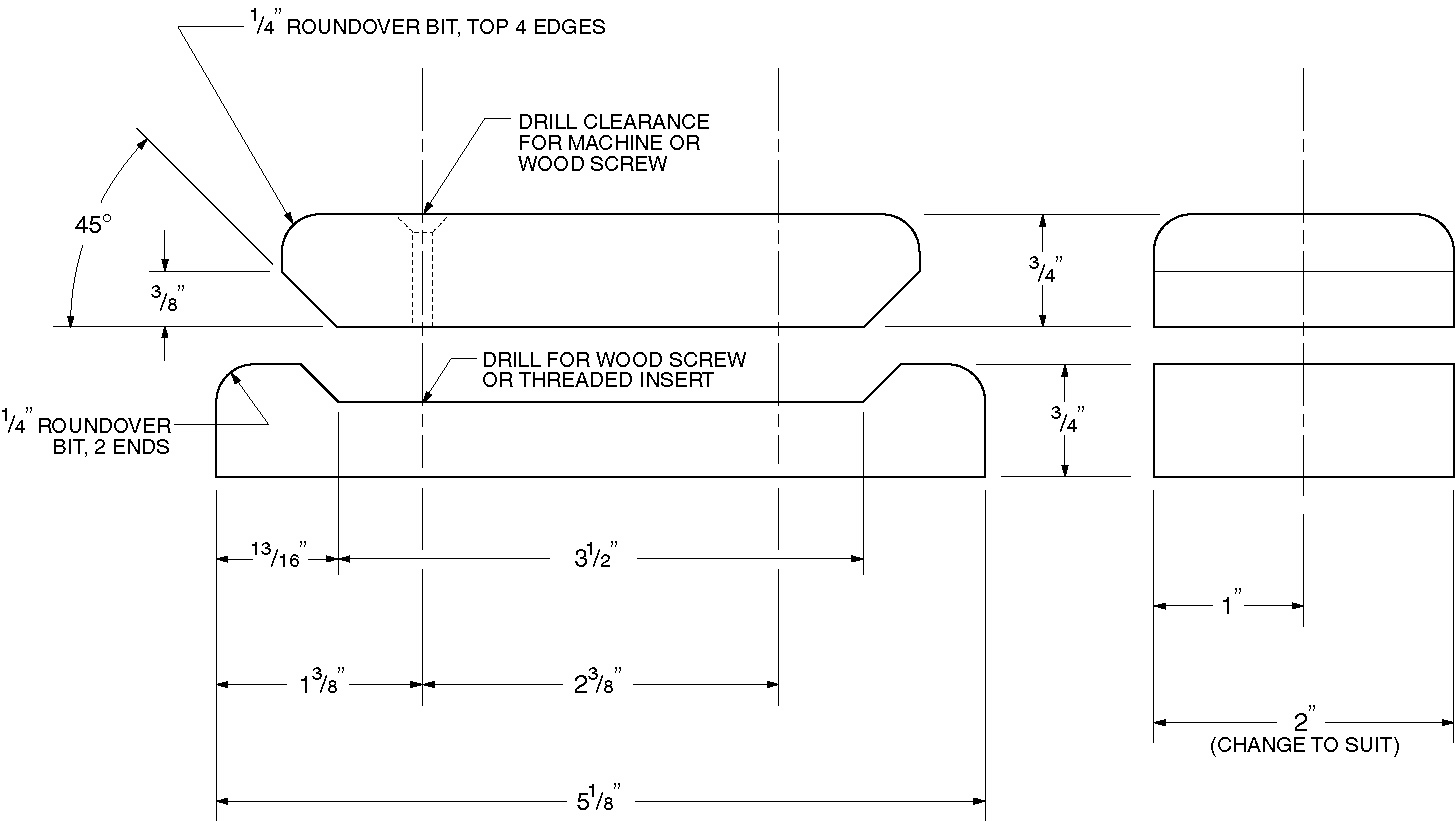After removing the bulk of material with spokeshave, rasp, coarse file,
and smooth file, on the straight section from nut to 10th fret or so, I use
wooden sanding blocks that are about 5" long x 2" wide that clamp the
paper at each end. Using them ensures an even and straight neck shaft. I
also have several that are 1" wide for narrower uses. For the curved areas,
such as the heal and transition area from shaft to headstock (again, after
filing), I use a piece of fairly stiff felt about 5/16" thick with sandpaper
wrapped around it. The felt has enough give to it to conform to overall
curves, yet it is stiff enough to ride across the smaller valleys and
inconsistencies and knock down the "peaks" until there are no more
valleys and peaks, only sweeping, smooth curves.
Here's a drawing of the block. It uses 2" wide strips cut off a standard
sheet of sandpaper.
